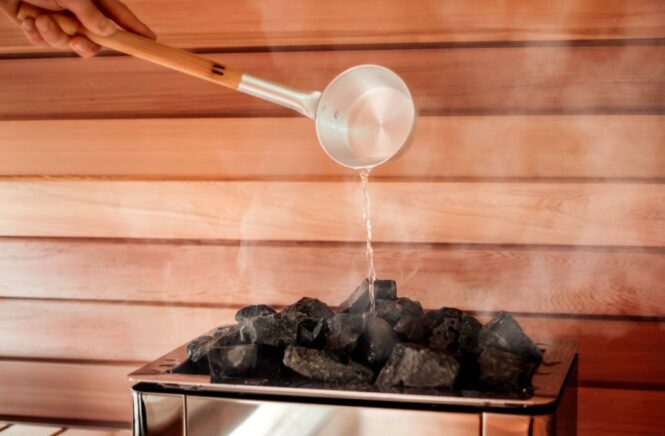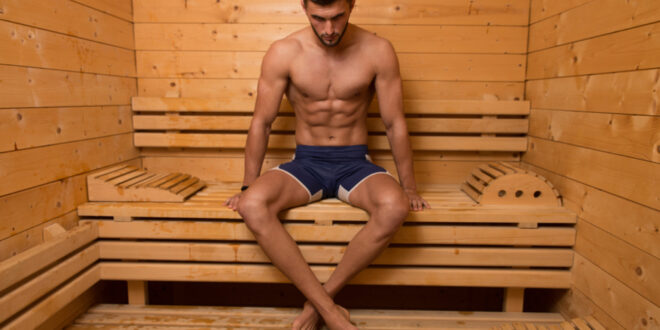Athletes need every edge to stay competitive. Smart recovery tools matter just as much as strength and skill. Sauna use isn’t just about luxury or relaxation—it’s a performance tool. If you push your limits on the field, in the gym, or on the track, regular sauna sessions can change how your body handles stress, heals, and grows stronger.
Heat Exposure Builds Real Resilience
Sauna use triggers short-term physiological stress. That’s the entire point. Your heart rate increases. Blood vessels expand. Sweat glands go into overdrive. This response boosts overall resilience. It improves how your body handles future training loads, heat, and pressure.
Athletes who use saunas regularly develop better heat tolerance. Their bodies adapt faster during summer training camps, desert runs, and tournament grinds. The heat shock response also improves red blood cell production. More red blood cells mean more oxygen reaching muscles during performance. That’s not hype—it’s biology.
Some experts compare sauna heat stress to aerobic training. Your cardiovascular system reacts in similar ways. But here, you recover while you strengthen. That’s a powerful recovery advantage.
What About Infrared Options?
Traditional saunas aren’t the only choice anymore. Athletes now use sauna blankets to get the same benefits in more accessible ways. These infrared blankets use advanced heat therapy to raise your core temperature without the intense ambient heat. You can use them at home. You don’t need a spa or health club visit.
Pure Sweat Spa in Gilbert, AZ, shows how advanced wellness tech like this fits into any recovery routine. They combine sauna use with medical-grade services. Their focus on personal well-being aligns perfectly with an athlete’s goal to recover smarter and stay stronger.

Better Circulation Means Faster Recovery
Sauna sessions increase blood flow. That means nutrients and oxygen reach muscles more efficiently. Post-workout soreness drops faster. Damaged tissue heals faster. Recovery doesn’t feel like an uphill battle anymore.
You train hard. But without solid recovery, your body falls apart. Soreness builds. Energy dips. Injury risk climbs. Sauna exposure fights back.
After 15–20 minutes inside a heated environment, the heart rate elevates and blood vessels dilate. That opens up circulation and helps the body clear out waste products like lactic acid. This creates a better recovery window.
Some athletes even report reduced joint stiffness and faster healing from sprains and minor soft tissue issues. It won’t replace physical therapy or rest. But it shortens downtime in many cases.
Natural Hormone Boost Without Supplements
Heat stress activates the pituitary gland. That leads to an increase in natural growth hormone release. Research shows that consistent sauna use can increase HGH levels by two to five times normal levels.
Growth hormone isn’t just about muscle size. It plays a major role in:
- Muscle repair
- Fat metabolism
- Bone regeneration
- Cellular health
Using saunas post-exercise creates the perfect storm: elevated body temperature, increased blood flow, and hormonal support. That’s a trifecta most athletes can benefit from without needing to touch banned substances or rely on lab-made boosters.

Immune Support for Year-Round Training
Missed sessions derail progress. When illness or fatigue hits, your performance drops. Saunas strengthen the immune defense by raising the core temperature to a level that mimics a fever.
That simulated fever prompts your body to release white blood cells and heat shock proteins. These act as your natural defense army. They find weak cells. They repair damage. They destroy potential threats. And they help you come back stronger.
The effect is subtle. You won’t feel it instantly. But long-term users often report fewer colds, faster bounce-back after illness, and better consistency in training schedules.
Endurance Gains from Heat Adaptation
Elite marathoners, cyclists, and triathletes already use sauna heat exposure to prep for big events. Endurance athletes gain real benefits when they heat-adapt weeks before a major performance.
Here’s what improves:
- Plasma volume (more fluid in the bloodstream)
- Cardiovascular efficiency
- Thermoregulation (better sweat control and temperature management)
These gains matter when race-day temperatures hit extreme levels. But even in cooler weather, a body that manages heat better performs longer before overheating.
Bonus Benefit ─ Mental Toughness
Sauna sessions challenge your mental edge. Sitting still in high heat for 20 minutes builds focus. You fight the urge to leave early. You breathe through discomfort. You gain control over your reactions.
Athletes who train their minds this way develop grit. That kind of training doesn’t show up on spreadsheets. But it shows up during extra innings, penalty kicks, and tie-breaking rounds.

How Often Should You Use a Sauna?
Frequency matters. Results build with consistency. One session after leg day won’t change your entire recovery profile. But 3–4 sessions per week, post-exercise, creates momentum.
Start with short durations—10 to 15 minutes. Work your way up to 20 or even 30 minutes if your body handles it well. Always hydrate before and after. Pair sauna use with rest and proper nutrition for full benefits.
For infrared sauna options, especially sauna blankets used at home, you can go more often due to lower ambient heat. Just make sure to monitor hydration and energy levels.
Who Should Avoid Sauna Use?
Saunas work for most healthy athletes. But certain people should be cautious.
- Those with uncontrolled blood pressure
- Anyone with cardiovascular disease without medical clearance
- Pregnant athletes
- Individuals recovering from recent surgery
Always check with your medical provider if you have doubts. Safety comes first. Even the best recovery tools can backfire when misused.

How Sauna Use Fits Into an Athlete’s Week
The smart move is to pair sauna sessions with heavy workouts. Let the heat assist your recovery rhythm. Use it post-leg day, after long runs, or on days when your nervous system feels overloaded.
On rest days, use shorter sessions to stay loose and maintain circulation. Avoid jumping straight into cold plunges after sauna unless you know how your body reacts. Some research suggests that contrast therapy helps, but timing matters.
Consider combining sauna sessions with stretching or mindfulness practices. The heat helps muscles stay pliable. That’s a perfect setting for mobility gains or breath training.
Final Thoughts
You already train with discipline. Now, recover with intention. Saunas give your body an edge in performance, endurance, and healing. Whether you use traditional saunas or modern sauna blankets, consistency delivers results.
Don’t treat recovery as an afterthought. Recovery is your foundation. Without it, effort breaks you down. With it, every workout builds you up.
Let your training show in your performance, not in your soreness.
 Imagup General Magazine 2024
Imagup General Magazine 2024
